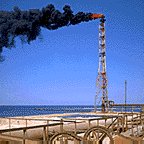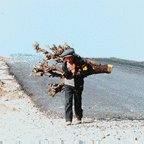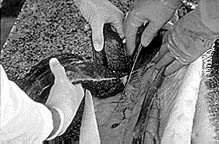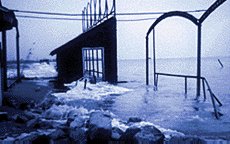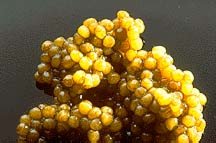|
Autumn 1994 (2.3) Overview
Issue: Petro-chemical plants, oil refineries and factories especially in Sumgayit and Baku; oil refineries, venting of natural gas from oil wells; burning of untreated garbage; and exhausts from engines. Concern: Health
may be affected especially to the pulmonary, digestive, circulatory,
and immune systems. In severe cases, genetic mutation may occur. Issue: Ground
water pollution from oil spillage and leakage from pipeline and
storage tanks resulting in petroleum hydrocarbons, heavy metals
and possibly radiation contamination; run off from heavy usage
of fertilizers and pesticides in agriculture; factory wastes
dumped into rivers; salinity of water table due to rise in Caspian
Sea and sea water intrusion; rusted water pipes; obsolete and
broken equipment in water treatment plants.
Issue: Burning
of garbage in large dumps outside the major cities; breeding
places for disease-spreading insects, rats, and wild dogs. Inadequate
and antiquated equipment to treat liquid wastes. Issue: Due to
Armenian land burning policy which has been carried out on 20%
of Azerbaijan's territory, total destruction of many homes, schools,
businesses, and government buildings. Loss of some of the most
productive land in the country; loss of crops such as grapes,
cotton and wheat; loss of pasture area for thousands of sheep
and cows forcing overpasturing in remaining areas. Loss of therapeutic
mineral spas and water; abusive exploitation of mines and forests
by Armenians in attempts to make quick profit from natural resources
in case they are forced to relinquish Azerbaijani land. Issue: Excessive
use of fertilizers, pesticides and herbicides in agriculture;
lack of adequate storage areas for toxins; aircraft spraying
of pesticides not carried out to safe standards including height,
wind velocity, and proximity to residential zones; people not
warned nor protected during sprayings. Issue: Offshore-Crude oil spillage into water can lower oxygen levels harming marine life and disrupt ecosystem; oil can be pushed by winds and waves to shore where it can harm marshlands destroying animal habitats, beaches, etc. Onshore: oil
spilled on the land can seep down to the water table and contaminate
drinking water supply. Land becomes a dead zone; all vegetation
dies in area. Cuttings that are expelled during extraction process
and emptied into open pools may contain radioactive materials. Issue: Serious
exposure to toxins in the air, soil, water, and the unknown effect
of combinations of these poisons may seriously effect the health
of men and women who live or work in these impacted areas which,
in return, will effect their children. Back
to AI 2.3 (Autumn 1994) |

